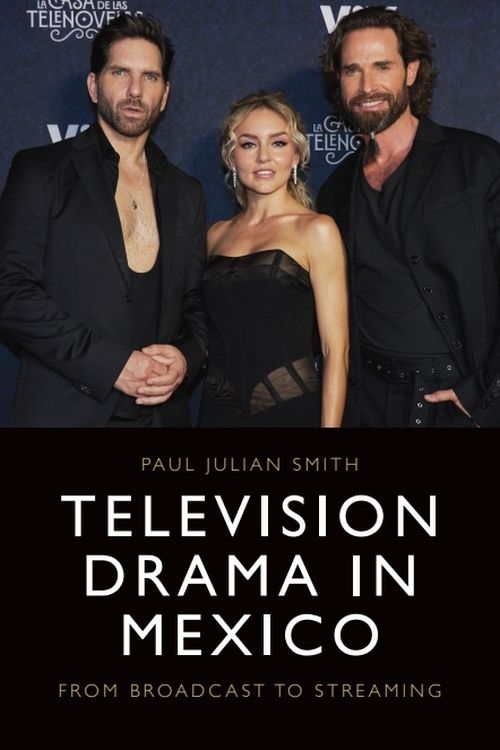
by Paul Julian Smith

Studies the current artistic and industrial transformation of TV series in Mexico – the biggest and most dynamic Spanish-language market
Tell us a bit about your book
Television Drama in Mexico: From Broadcast to Streaming examines and celebrates very recent TV series and serials from Mexico, which is one of the global innovators in the medium. I wanted to show how things are changing in television at a crucial time when linear broadcast is giving way to streaming video on demand.
Of course, this is happening everywhere. But in Mexico, Televisa, the powerful heritage network, has merged with Univision, the USA’s premier Spanish-language channel, to make a huge, joint audience for the first time. And Netflix and Amazon Prime have made Mexico City a regional production hub. I believe English-speaking readers, from the UK and the USA, will be surprised by the differences between their experience of television and that of the Mexican or US Latino viewer. I’m hoping my work challenges stereotypes about Mexico, which is now a middle income not a poor nation, and telenovela, which remains a key genre in its different forms and is much more than just campy melodrama. The book’s illustrations give a taste of the shows’ visual styles and high production values.
What inspired you to research this area?
I used to concentrate on cinema. But visiting Mexico frequently over the past twenty-five years I became aware of how TV is so beloved and integrated into everyday life there, in a way that film can’t possibly compete with. So, I spent a lot of happy time sitting in hotel rooms watching the latest shows and then asking friends how they felt about them. Of course, I also did more formal research on production processes and reception. And the shows that I write about are now available world-wide with English subtitles on Netflix, Amazon or ViX, Televisa’s free streamer.
What was the most exciting thing about this project for you?
Discovering how extreme broadcast telenovela for a general audience can be. I write about one show whose theme is revenge porn and digital shaming. It’s frankly feminist in its attack on dumb and cruel men, who get their just desserts, and in celebrating women’s friendship rather than heterosexual romance. It’s a long way from the old Cinderella-style plots.
Another show, a remake of a classic telenovela, has a time travel premise where the heroine is a noblewoman accused of witchcraft and burnt at the stake by the Inquisition before reincarnating as a respected surgeon in a hi-tech modern hospital (the stars of this title are on my book’s cover). That was a surprise!
Did you discover anything particularly strange or surprising?
One streaming thriller opens with the assassination of the President of Mexico and with his wife as the main suspect. And the actor looks just like the real-life President at the time. This is difficult to imagine in the US or UK. Another series suggests that the Mayor of Mexico City, the second most important politician in the country, is a sleeper agent for the narco gangs who dump their victims’ bodies in the city centre. It’s a Manchurian Candidate-type premise, but in a very contemporary style once more.
Did your research take you to any unexpected places or unusual situations?
I have a chapter on lucha libre, the classic Mexican masked wrestling series, which remains a key cultural force. I wanted to investigate the locations used in the bio-series of the famous wrestler, Blue Demon. This led me to an abandoned theatre with the notable name of Fru-Fru, where the series had shot a key sequence.
I stumbled across the book fair in the Zócalo and listened to an author talk about his wrestling novel, before visiting a marvellous museum with a temporary exhibition on Blue Demon. Fortunately, the Historic Center of Mexico City is much safer than the series or novel suggested and I didn’t come to any harm.
My last chapter is on a bio-series of movie star María Félix. Her lavish fashion and jewellery choices were super fun to write about!
What’s next for you?
I’ll continue to work on Mexican media. It’s a huge and diverse nation (Mexico City alone has three times the population of London). And there are always fascinating works emerging. Meanwhile everyday life in New York City, with its enormous Spanish-speaking population, is inspiring in itself.
About the author
Professor Paul Julian Smith is Distinguished Professor in the Comparative Literature Program at the Graduate Center in City University of New York. He was previously the Professor of Spanish in the University of Cambridge, UK. He is the author of 25 books and over 100 academic articles.






